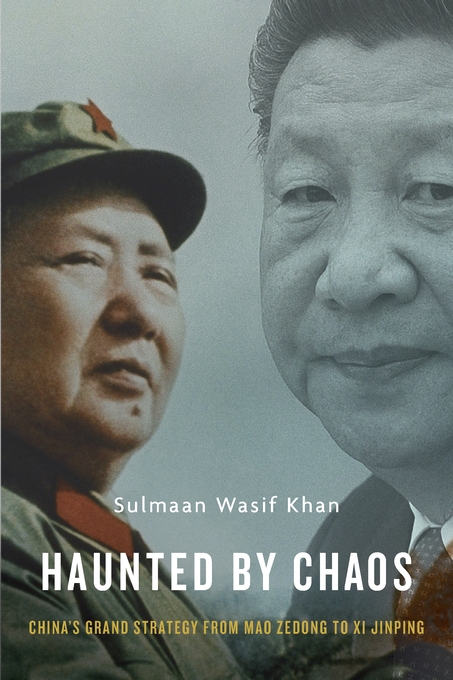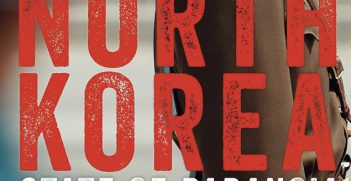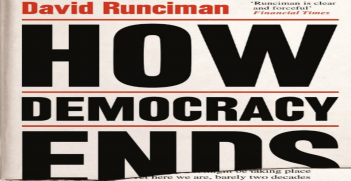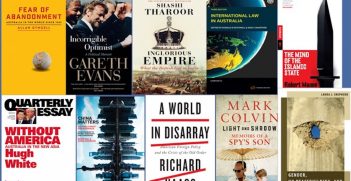Book Review: Haunted by Chaos: China’s Grand Strategy from Mao Zedong to Xi Jinping

By most accounts, China has behaved badly through the COVID-19 pandemic. Fascinating insights can be derived about China’s present behaviour by looking into its past.
An initial cover up. Punishment of whistle-blowers. Permitting international travel out of Wuhan, the origin of COVID-19, even after Chinese domestic travel was banned. Threatening economic sanctions on Australia following its call for an independent, international enquiry into the origin and handling of COVID-19.
How can we understand China’s behaviour? Sulmaan Wasif Khan’s book, Haunted by Chaos: China’s Grand Strategy from Mao Zedong to Xi Jinping, written well before the outbreak of COVID-19, provides fascinating insights into China’s statecraft in this regard.
China may seem all powerful, especially compared with some Western countries which are struggling to manage COVID-19. But according to Khan, all of China’s leaders from Mao to Xi see China as a brittle entity in a hostile world. These men came of age in a violent, unpredictable broken world. These leaders are “haunted by chaos,” having seen China torn apart by warlords, opium wars, the Cultural Revolution, and the Tiananmen Square massacre. They are also haunted by the collapse of Soviet Union and the fall of the communist regimes in Eastern Europe.
Khan defines “grand strategy” as the marshalling of different forms of power — diplomatic, economic, and military — to achieve an overarching objective or set of objectives. What China wants from its grand strategy is to prevent chaos and ensure stability, and fear is the paramount driver.
In his historical narrative of China’s grand strategy, Khan reminds us that in 1920 China did not exist. There were at least six different governments, as well as foreigners with treaty ports. Starting with the Jiangxi Soviet, Mao Zedong progressively cobbled together the China we know today. This was a process that was not preordained — it could easily have gone the way of South Asia, where British India fractured into several countries. Consolidation continued even after the proclamation of the People’s Republic of China in 1949.
Deng Xiaoping, Mao’s successor as China’s paramount leader, dragged China into the modern world through the policy of economic opening and reform, which was actually begun by Deng while Mao was still alive. For Deng, economic modernisation was key to national security. And being pragmatic, he was inspired by the examples of South Korea, Hong Kong, Singapore, and Taiwan, which were all way ahead of China.
For Khan, the Tiananmen Square incident was vintage Deng: he couldn’t have a bunch of students undermining economic modernisation. According to Deng, economic modernisation does not lead to democracy. Rather, you must clamp down politically to have economic modernisation, or risk going the way of former Soviet leader Mikhail Gorbachev. And being haunted by chaos, Deng was suspicious of narratives of the time, like the “end of history” and US President Bill Clinton’s predictions that China’s WTO membership would lead to political freedom.
Presidents Jiang Zemin and Hu Jintao both stuck with the Deng programme of economic opening and reform, although they added nationalist ideology in order to bind the country together following the Tiananmen Square fractures. Rapid economic growth was also important for keeping the citizenry onside, while military modernisation enhanced external security. Overall, they managed the country well as they weathered the Asian and Global Financial Crises, the US bombing of the Chinese Belgrade Embassy, the crisis in the Taiwan Straits, and the Hainan spy plane incident.
According to Khan, President Xi Jinping is very powerful but deeply insecure. His insecurity was born from his own rustication and his father’s purging during the Cultural Revolution. Xi worries that China’s problems could fester and lead to disaster, and believes that he must be in charge to prevent another Cultural Revolution. This has meant a massive centralisation of political power under Xi, and a tightening up on all other centres of power. Khan argues that Jiang and Hu would not have clamped down on Xinjiang or occupied the South China Sea as the more assertive Xi has done.
Under Xi, China has arguably also been suffering the perils of success. It has become so big, powerful, and assertive that neighbours like Japan and Vietnam are terrified enough to increase their defence spending.
China’s management of the COVID-19 crisis has highlighted some of the downsides of its current assertive grand strategy. A highly centralised power structure, where officials feel they must tell superiors what they want to hear, only makes the management of a pandemic worse — as does promoting false domestic narratives in order to bolster domestic support for the regime. And “wolf-warrior diplomacy,” whereby Chinese diplomats are increasingly adopting an assertive approach to any foreign country that questions its handling of the COVID-19 pandemic, only minimises sympathy for China from the international community. There have even been reports of criticism of China emanating from its close friend, Pakistan.
All things considered, the time has arrived for Xi Jinping to abandon his assertive and combative approach to implementing China’s grand strategy for state security. With an increasingly well-educated and prosperous population, dialling down on authoritarianism might actually improve public support for the regime, while more serious attempts at fostering soft power would only improve Beijing’s reputation in the eyes of the international community.
In reality, China’s grand strategy may not be quite as consistent over time as Khan suggests. And sometimes his message can get lost in his detailed recounting of events. But for this reader Khan does provide very useful historical context for understanding China’s actions through the pandemic and is thus well worth reading.
This is a book review of Sulmaan Wasif Khan, Haunted by Chaos: China’s Grand Strategy from Mao Zedong to Xi Jinping (Cambridge, Massachusetts: Harvard University Press, 2018). ISBN: 9780674977099
John West is adjunct professor at Tokyo’s Sophia University and executive director of the Asian Century Institute. His recent book “Asian Century … on a Knife-Edge” was reviewed in Australian Outlook.
This article is published under a Creative Commons Licence and may be republished with attribution.





